There is a lot of skepticism concerning Jonathan Sanchez, and for good reason. While he threw a No-Hitter last season and was re-signed to a $2.1 million extension this off-season, a lot of Giants fans still question Sanchez's ability to pitch at the next level.
After all, he was deemed to be a breakout candidate last season, and it took him until July 10 to really show any progress as a pitcher. Furthermore, if you look at his overall statistics from 2009, it isn't all that impressive:
8-12 W-L record, 4.24 ERA, 4.19 FIP, 1.37 WHIP.
Those aren't exactly the numbers of somebody on the cusp of success.
However, for all those who may not believe in Sanchez, and thought he should have been traded last season at the July Trade Deadline (despite his No-Hitter, he still didn't have as much value at the time as many Giants fans would've liked to believe), here are a few reasons why Sanchez is capable of breaking out in 2010.
1. Sanchez is getting better and more confident with his secondary pitches.
Sanchez only threw his fastball 66 percent of the time in 2009, his lowest total in his four seasons at the Major League level. Now, one may wonder why he threw his fastball less, though he was averaging the fastest average velocity of his four-year career.
Well, Sanchez may have better pitches in his arsenal than just his fastball, and he made a step forward to prove that in 2009.
Last season, he threw his slider 21.3 percent of the time, the highest percentage of any secondary pitch he has thrown in his Major League career. He threw it for good reason though, for his pitch value behind his slider proves that it was his most successful pitch in 2009.
While his fastball only average 1.2 runs above average, his slider averaged 11.0 runs above average in 2009.
Thus, Sanchez proved last year that he has an excellent secondary pitch to go along with a good fastball that is only going to improve, as evidenced by his increase in fastball velocity from 90.8 MPH in 2008 to 91.7 MPH last year.
Another promising sign of Sanchez's progress was also his willingness to throw a curve ball last season. For the last two years, Sanchez's arsenal was limited to three pitches: fastball, curve ball, changeup. The last time he had more than three pitches was his rookie season in 2006, where he threw a curve ball as well (though only 1.1 percent of the time).
Granted, Sanchez didn't throw a curve ball very much last year (only 0.8 percent). However, considering his changeup has never been too effective in his career (he has never had a positive runs above average in terms of pitch value with his changeup), a curve ball may be what he needs to continue his progression as a starting pitcher.
His curve isn't bad (as evidenced by the 1.28 runs above average per 100 pitches on his curve last season) and he still is learning to really throw it.
Why do I think he still is learning?
4.2 percent of his pitches were unknown according to Fangraphs.
I guarantee you most of those "unknown" pitches were attempted curve balls. If he can pan out his form on the curve this Spring, then Sanchez will have a very effective third pitch behind his fastball and slider.
2. Sanchez had some fluky stats in 2009 that probably won't occur again in 2010.
Sanchez's advanced stats from 2010 are a bit weird.
Sanchez didn't particularly have the greatest ERA, but opponents' batting average against him in 2009 was the lowest of his Major League career at .227.
His BABIP was below the league average at .290, but he had a high HR/9 ratio at 1.05, and a similarly high HR/FB rate at 10.3 percent.
And, Sanchez's GB/FB ratio was the lowest of his Major League career at 0.95 (probably caused by his 43.1 percent fly ball rate, which was his highest fly ball rate since his rookies season).
What does this all mean? I'm not sure. Sanchez has been throughout his career and will continue to be a high strikeout guy. He proved that in 2009 by his 9.75 strikeout rate (the second-highest strikeout rate for a Giants starting pitcher behind Tim Lincecum). So, naturally, with a tendency to strike guys out (not to mention walk guys) his batted ball statistics will always be out of whack from season to season simply because hitters won't make as much contact against him in comparison to an "average" starting pitcher.
Don't believe that claim? The stats say it all. Every year since 2006, Sanchez's contact rate has been below the league average (the league average contact rate for a pitcher is 80 percent; Sanchez has always been in the 70 percent range), and last season, he had the lowest contact rate out of any pitcher on the Giants team at 73.8 percent (to put things in perspective, Matt Cain had a contact rate of 80.7 percent).
Will Sanchez go down in a lot of those numbers from a year ago in 2010? Maybe, maybe not. However, judging from the progress he made from July through September, and his increase in pitch variety and comfort in them, dont' be surprised to see more average-looking stats from Sanchez (especially in terms of the HR/FB percentages).
3. Sanchez is meant for the fourth spot in the rotation.
Last year, Sanchez was the fifth starter in the rotation behind Lincecum, Randy Johnson, Cain, and Barry Zito. After Johnson's injury, Sanchez was moved to the fourth spot, while Zito was moved to the second spot in the starting rotation.
Sanchez was infinitely better when he was moved to the fourth spot.
Why was that so? Because Sanchez didn't have to face No.1 starters when he pitched. What many people don't realize is that being a No. 5 starter can be more of a challenge than people would want to believe. Thanks to all kinds of scheduling differences (and considering the Giants starting on the second day of the year in 2009 rather than the first, they had a lot of them) starting pitchers will usually not face their counterpart on another team. You won't always see Lincecum vs. Dan Haren. Some days you'll see Haren vs. Sanchez (as we saw at times last year) or Lincecum vs. Doug Davis.
Unfortunately, Sanchez wasn't ready to handle that pressure in the pitching rotation (and the pressure of not having run support in those matchups against an opposing "ace") and his confidence was shot early and often in the first half of the season. When he was moved to the fourth spot in the rotation and he was facing No.3 through 5 starters, he looked more comfortable, and therefore, had more success.
Starting 2010 in the No.4 spot in the rotation (behind Lincecum, Cain and Zito) will boost Sanchez's confidence. And, considering confidence is a big issue with him, the more confident and comfortable he is on the mound, the better results he will produce as a starting pitcher.
Subscribe to:
Post Comments (Atom)




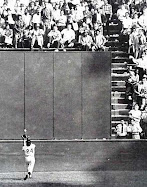
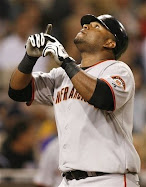
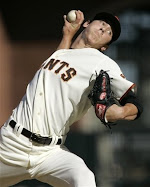
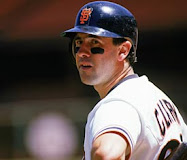
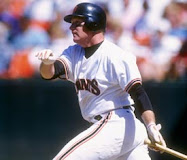
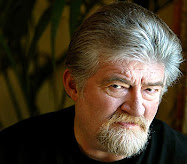

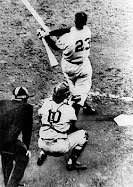
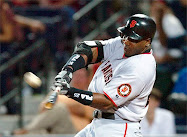
No comments:
Post a Comment